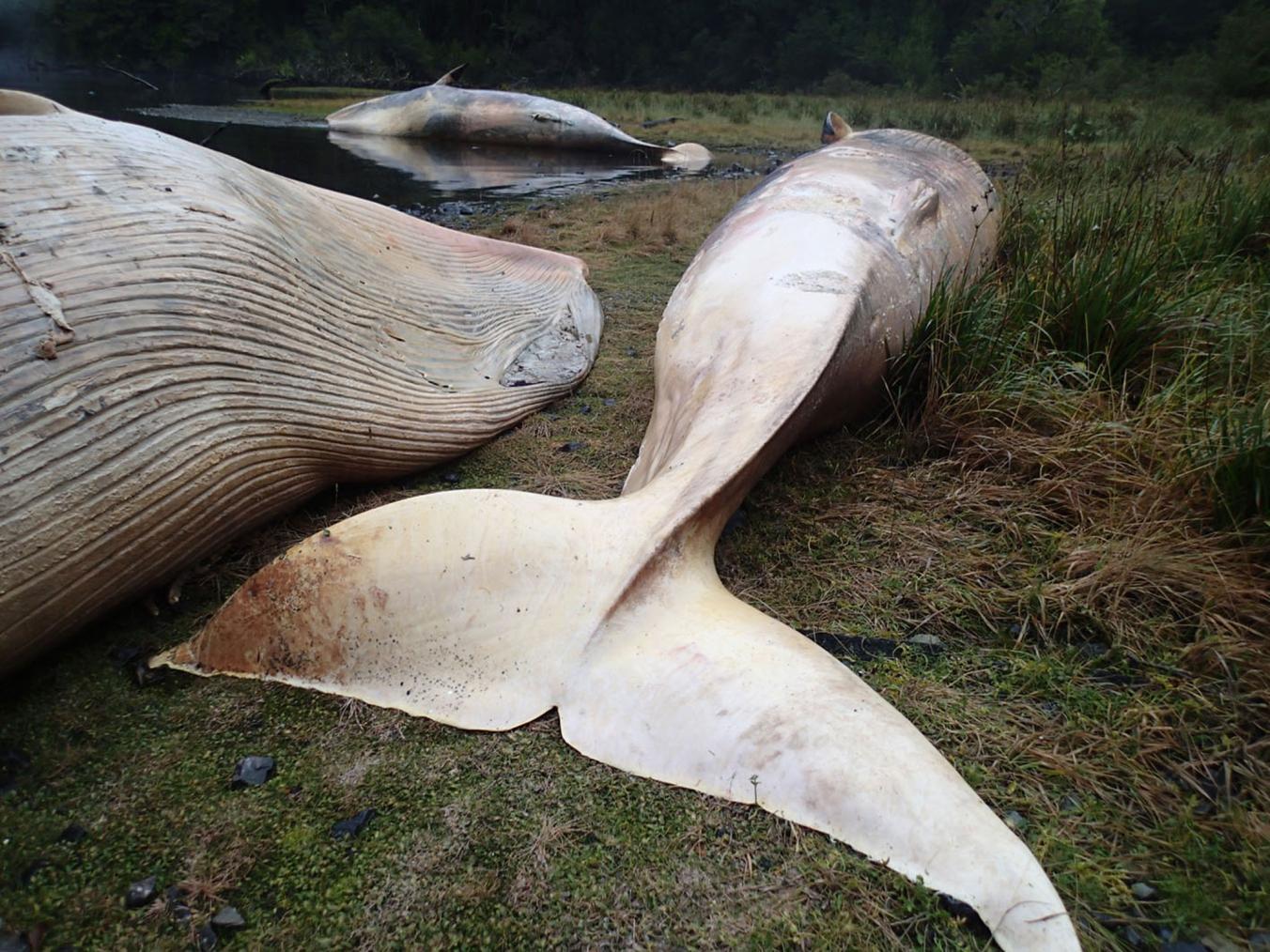
During of a routine aerial research mission last summer, scientists flying over a remote fjord in Chilean Patagonia spotted something below that was not only entirely unexpected, it was also truly shocking: 337 dead whales.
They were witnessing the grizzly and decaying aftermath of the biggest whale stranding event ever observed. What’s even more alarming is that—as of yet—researchers are not sure what caused such a massive die off, although they’ve got a hunch.
Because the region is so far away from civilisation, and because the seas between the Gulf of Penas and Puerto Natales are notoriously treacherous, researchers have not yet been able to examine the whales directly.
However aerial and satellite photography confirmed the existence of 305 bodies and 32 skeletons in the area, which lies towards the most southerly point of South America. Judging by the deceased animals’ size and the location of their discovery it’s likely they were sei whales.
The grim finding—first made by scientist Carolina Simon Gustein and her colleagues from the Universidad de Chile and Consejo de Monumentos Nacionales in Santiago—sent ripples of concern through the conservation community when the team’s findings were leaked in the Chilean press several days ago.
Endangered across its native range (usually deep waters far from the coast), sei whales are large baleen whales, reaching up to nearly 20m long and weighing up to 50 tons.
Considered the fastest cetacean, the whales can swim at speeds up to 31 miles per hour, and generally live up to between 50-70 years of age. The worldwide population is estimated to only be about 80,000, making this acute concentration of deaths even more significant.
Whilst scientists are still trying to figure out what caused the die-off, the whales’ demise could be the result of a ‘red tide’ (a rapid bloom of toxic microorganisms), which has been linked by Smithsonian researcher Nicholas Pyenson with massive die-offs of marine mammals off the coast of Chile three to five million years ago.
Red tides can be caused or exacerbated by nutrients from sewage and fertiliser, although Gutstein has stated that she doesn’t wish to speculate about the exact causes of the tragedy until her and her team had conducted more thorough research into the event.
‘We are planning on going back there in the summer to try to study them more closely,’ said Gutstein.
Until then, the deaths will likely remain a frustrating mystery.
